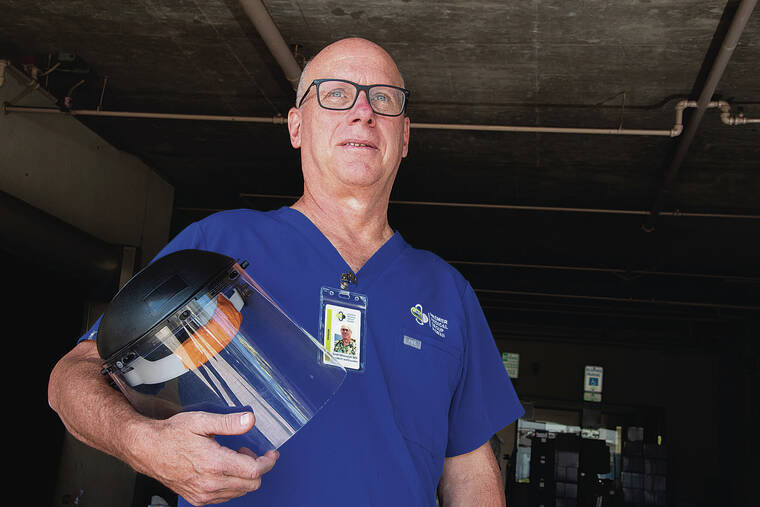A recent COVID-19 outbreak at a Hilo nursing home has resulted in 93 cases and one death, according to the state Department of Health.
The state Health Department confirmed it was notified in early April of the outbreak at Life Care Center of Hilo, and has been providing technical assistance to the facility.
As of Monday, the facility had reported 93 cases, including 76 residents and 17 staff. One resident who tested positive for COVID-19 died after being transferred to the hospital, according to DOH.
The number of new cases has slowed after some heightened infection prevention measures were put into place in consultation with DOH.
No new cases have been identified in the past week, DOH said.
The center, a skilled nursing and rehabilitation facility, also experienced outbreaks earlier in the pandemic, including in October 2020 and in the summer of 2021.
The Life Care Center of
Hilo administrator did not
immediately return calls from the Star-Advertiser.
The outbreak occurs as the number of nursing home resident cases per capita appears to be on the rise in Hawaii, according to the AARP Nursing Home COVID-19 Dashboard Opens in a new tab.
There were 5.4 COVID cases per 100 residents for the four weeks ending April 23, compared to 1.3 cases per 100 residents for the four weeks ending March 26. This places Hawaii in the top spot in the United States, above New Mexico and North Dakota.
Hawaii has a high rate of vaccination among its nursing home residents — with nearly three-
quarters, or 72.4%, up-to-date on their COVID-19 vaccinations, according to the dashboard.
But generally, when COVID-19 transmission rises in the community, cases tend to enter nursing homes, according to AARP Hawaii spokesperson Craig Gima, who said the rise was concerning. Staffing shortages at nursing homes also continue, which adds stress to any outbreak .
“The bottom line is we shouldn’t let down our guard, even though there’s no emergency any more,” Gima said. “We shouldn’t stop protecting the people who are most vulnerable.”
Dr. Scott Miscovich of Premier Medical Group credited the nursing home staff for their hard work managing the outbreak, but said this will not likely be the last one. It’s a reminder of the risks that still exist.
“Our kupuna are still at risk, especially those that are in a group setting like
a nursing home or that may live in a multigenerational home,” Miscovich said.
“We may be bringing it home unknowingly, because we still have half of us that become positive that are asymptomatic.”
Life-saving medications for COVID-19 — such as Paxlovid and remdesivir — are now available, but need to be administered early to be successful, he said.
“Unfortunately, we are finding that the very important treatment remdesivir is becoming more difficult to find,” he said. “We need to make sure our state has access to it so we can save those at risk.”
DOH said its Office of Health Care Assurance also investigated an anonymous COVID-related complaint, and conducted a focused
infection control survey at the home based on federal requirements.
DOH said its specialists can provide on-site assessments and training to help facilities implement best practices in infection prevention and control.
During an outbreak, the specialist works with staff to review and recommend actions that can be taken to prevent further spread of disease.
DOH recommends that nursing homes keep residents and staff up to date on COVID-1 shots, review sick leave policies to ensure staff stay home when sick, and follow updated Centers for Disease Control and Prevention guidance such as wearing masks around those most vulnerable.
“High COVID-19 vaccination and booster uptake in nursing homes, along with implementation of other layered mitigation measures, has greatly reduced the number of hospitalizations and deaths associated with outbreaks in these
settings,” said DOH in an email. “Unfortunately, once a COVID-19 outbreak has started in a nursing home,
it can be very challenging to control, and deaths can still occur.”




